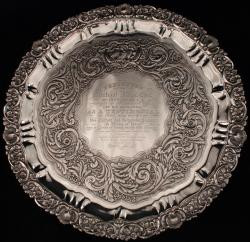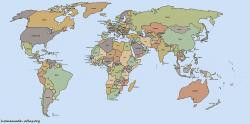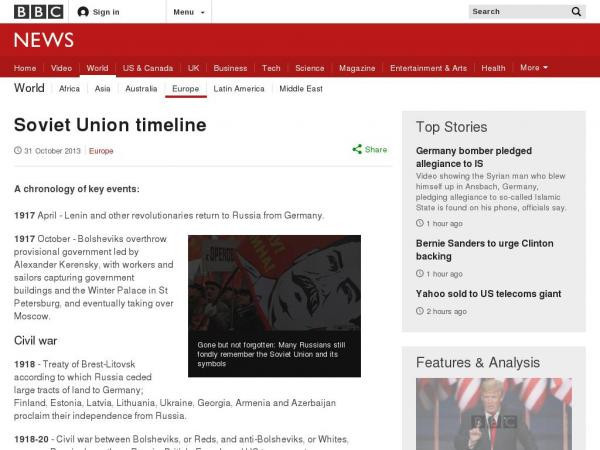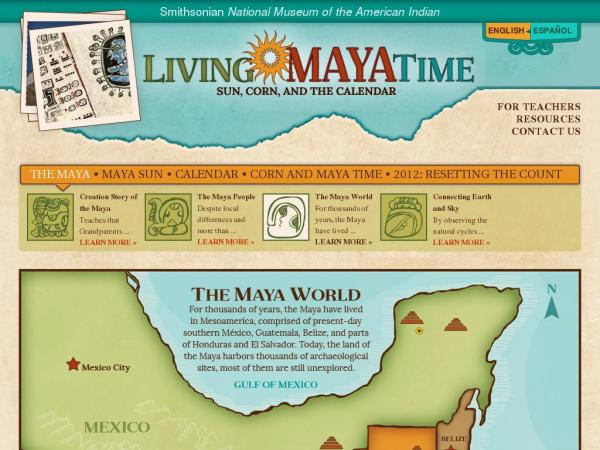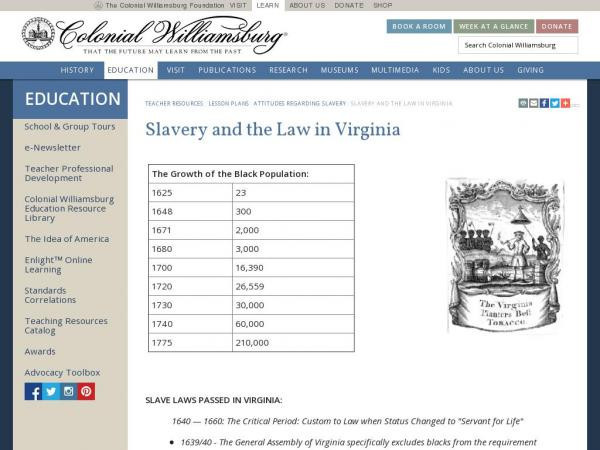Kate Harris
Social Studies teacher
Pittsburgh CAPA
Middle School (13 to 15 years old), High School (16 to 18 years old)
Teacher/Educator
Language Arts And English, Civics, Literature, Cultures, Economics, Social Studies, Geography, Writing, US History, Arts, Other
I'm a history-lover, art fan, and bookworm. I taught high school history (U.S. History and World Religions) for ten years in North Carolina, teach currently in Pittsburgh, PA, and am working to help teachers make the most of this new resource!
Kate Harris's collections
The March on Washington
The Civil Rights Movement of the 1950s and 60s tackled many problems facing African-Americans at the time. This collection offers a brief video introduction into the March on Washington in 1963, which brought national attention to many of these issues, and asks students to analyze a photograph and three artifacts from the March. Students will answer the question "What problems did participants in the March on Washington aim to solve?" and consider how these issues continue to have relevance in the United States today.
tags: Civil Rights, Martin Luther King, A. Phillip Randolph
 Kate Harris
Kate Harris
6
The Irish Experience in Pittsburgh
<p>Created for the AIU3 workshop on 3/17/17, this topical collection includes images from Historic Pittsburgh (<a href="http://digital.library.pitt.edu/images/pittsburgh/">http://digital.library.pitt.edu/images/pittsburgh/</a>), the Smithsonian Collection, the records of the Ancient Order of Hibernians in the Detre Library and Archives, Heinz History Center, and additional web resources. This large group of documents is intended to be shaped and whittled into useful collections for individual classrooms. Teachers might consider linking the documents to themes like:</p><p>•Immigration</p><p style="margin-left:32px;">•Push and Pull factors</p><p style="margin-left:32px;">•Growth of social networks</p><p style="margin-left:32px;">•Assimilation</p><p style="margin-left:32px;">•Nativism</p><p style="margin-left:32px;">•Contributions (Political, Cultural, Military, Philanthropy)</p><p>•Industry in Western PA</p><p>•Labor Movement</p><p><br /></p><p>To make this collection your own, copy it and then use the edit feature to add and remove documents as well as contribute any annotations that might help your students. </p>
 Kate Harris
Kate Harris
29
The History and Spread of Islam
This collection can be used by students to explore the founding, history, and spread of Islam. Includes short informational texts paired with artifacts from around the globe and some links to additional resources. Students are tasked with tracking the countries that are mentioned on a map, taking notes on how the religion spread, and how the religion may have changed as it spread to new areas and ethnic groups. There is a quiz to assess their understanding of these concepts at the end.
The guiding questions for this collection are:
1) Where was Islam founded and where did it spread?
2) How did the religion spread from place to place?
3) How were the practices and the beliefs adapted by the people of different geographic areas?
 Kate Harris
Kate Harris
36
The End of the Cold War
This teaching collection chronicles the events and people associated with the end of the Cold War. Suggested teaching strategies are embedded throughout.
Guiding questions include:
-Who started the "revolutions" of 1989--Gorbachev and his reforms? People in Eastern Europe?
-Evaluate the roles of the United States and the Reagan and Bush administrations, as well as the changes within the Soviet Union, in bringing about the end of the Cold War.
-Why did the Cold War end?
-What were the costs of the Cold War, both human and material?
-What are the legacies/lessons of the Cold War?
-What uncertainties or questions remained as the Cold War came to a close? What would come to characterize the 'New World Order' that followed?
Tags: Wilson Center, Cold War, Reagan, Gorbachev, glasnost, perestroika, revolution, Soviet Union, USSR, Communism
 Kate Harris
Kate Harris
21
The Emancipation Proclamation
<p>How did the writing of the Emancipation Proclamation reflect the political tensions of the time? This collection reviews the writing, impact, and legacy of the Emancipation Proclamation through videos, informational texts, and art. Students can work through the lesson independently and their understanding of the Emancipation Proclamation will be assessed via quiz questions. Students will be able to determine the short-term and long-term impacts of the Emancipation Proclamation.</p>
 Kate Harris
Kate Harris
17
The Crusades of the Middle Ages
This collection includes resources for teachers looking for materials related to the Crusades. Students can gain insight into the weapons and nature of fighting in the Crusades by investigating the images included as well as the video on bows, while the essays and map will provide ample background information. Finally, a lesson plan from the Cooper Hewitt Design Museum explains how to design a marshmallow catapult or trebuchet!
 Kate Harris
Kate Harris
10
The Art of Writing and Calligraphy
This collection includes a variety of resources representing styles of writing from around the world. It encourages viewers to consider writing not only for its ability to communicate through letters and symbols, but also for its artistic value. The collection includes a video on Sumerian writing, a website on African writing systems and art, and artifacts that are examples of the writing of East Asian, Arabic, Cherokee, Hebrew, and Modern European alphabets. In addition, a few tools used for writing are included. There is some background material on each type of writing as you read through the collection.
Questions for classroom discussion and research might include:
-What is the purpose of writing? Why use hand-writing or calligraphy instead of using a computer?
-How do alphabets differ?
-How can a style of calligraphy (or font change) the interpretation of a written work?
 Kate Harris
Kate Harris
29
The Ancient Greeks Live On
A collection of artifacts showing how the ancient Greeks have influenced the modern world, combining both ancient Greek artifacts and modern objects and images. In some cases, the collection is incomplete and more modern examples could be identified. This is noted with some text and questions. Teachers might review this presentation with students, challenging them to identify modern examples that connect with the ancient objects that they see. Teachers are encouraged to ask students to compare and contrast, noting how time has changed certain concepts or ideas (e.g. our democracy is far more inclusive than Greek democracy was, although we use a representative democracy, not a true democracy.) Finally, teachers might consider using this activity as a precursor to further research on a specific topic addressing how the ancient Greeks continue to influence the modern world. Useful after students have had some introduction to the history and culture of Greece.
 Kate Harris
Kate Harris
29
The Achievements of Ancient Mayan Civilization
This collection reviews the major achievements of the ancient Mayan civilization, including its great cities, use of writing, calendar, religious beliefs, art, and architecture. Resources are provided as a basis for student research. Several of the videos are available in Spanish and English and would be useful for a Spanish language teacher who wants students to research the Maya.
Guiding questions to consider while reviewing this collection:
1) In what ways did observation of the sun influence multiple facets of ancient Mayan life?
2) Which elements of ancient Mayan life persist in Mayan culture today?
3) How are art, religion, and architecture seemingly intertwined in ancient Mayan culture?
4) What are the various theories about the demise of the ancient Mayans?
This collection focuses on the achievements of the ancient Mayans; however, it is critical to remember that the Maya are a living people and continue to preserve old traditions while building new ones in the modern world. For those interested, here is a collection on the modern Maya: https://learninglab.si.edu/collections/the-maya-people-today/yKMyzCEPMadkGgA8.
 Kate Harris
Kate Harris
25
Take Action on Air Pollution
<p>This collection of resources invites students to examine how societies have been convinced to take action regarding air pollution over time, and to craft their own persuasive message regarding pollution. Students will identify several different means of compelling individuals and groups to change their behavior in order to benefit the environment. They will then evaluate the effectiveness of those strategies. Finally, they will create their own message convincing others to take steps towards improving the environment. </p><p>Tags: smoke control, smog, pollution, environmentalism, earth day, advertising, persuasive writing, ad campaign</p>
 Kate Harris
Kate Harris
9
Sputnik: Scientific Advances, Public Perception, and Political Priorities in the Cold War
The Soviet launch of Sputnik did much more than simply send a satellite into space. The announcement that the USSR had successfully launched a satellite that orbited the Earth was used to dramatize Soviet scientific superiority and set into motion a series of actions and statements by U.S. politicians designed to manage the public's fears and prevent the United States from falling behind.
Guiding questions:
-When it comes to military strength, which is more important: reality or perception?
-How do the sciences impact national defense?
-Why was a space program considered important and necessary for both the Soviet Union and the United States?
-How and why do foreign events impact domestic politics and culture?
Tags: Wilson Center, Cold War, Space Race, Sputnik, Technology, Soviet Union, USSR, Communism
 Kate Harris
Kate Harris
21
Sports and the African-American Civil Rights Movement
Popular athletes can reflect the broader societal change that is going on around them; they can also be instigators of that change. This collection traces the African-American civil rights movement through the 20th century and touches on athletes like Jack Johnson, Jackie Robinson, and Muhammad Ali. Students can use the collection independently to learn about this subject and complete the timeline worksheet included at the end.
Students will be asked to generalize about the civil rights movement during different time periods in American history, noting the shifts in focus, strategies, and success. In addition, they will draw parallels between events in sports history and the civil rights movement.
 Kate Harris
Kate Harris
18


